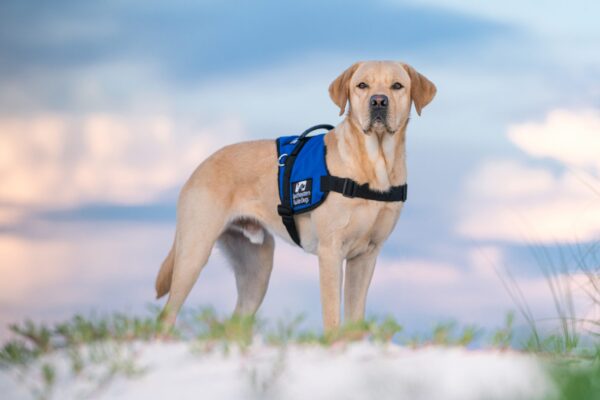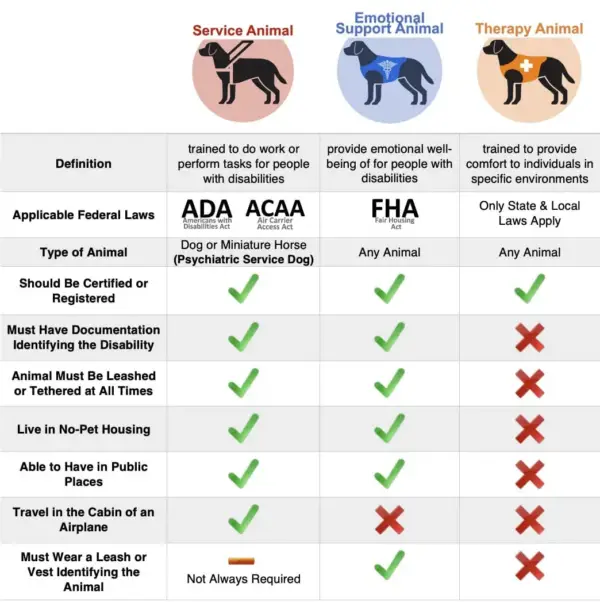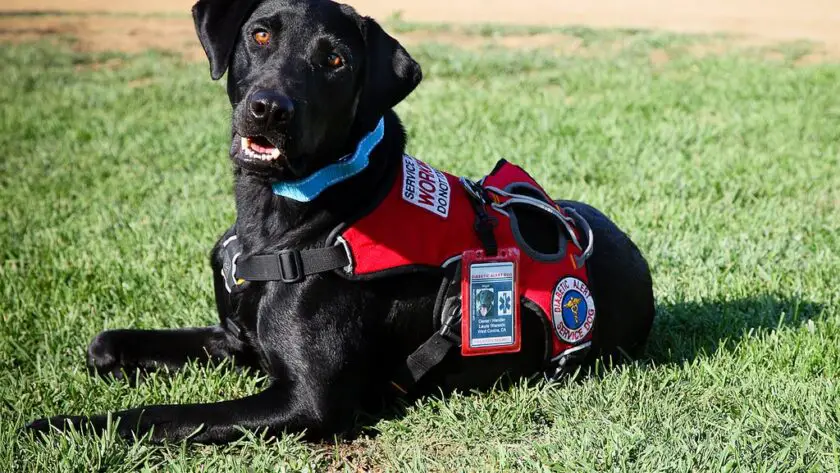Ensuring the well-being and safety of a service dog and their owner is not only a moral responsibility but also a legal obligation in many places. These remarkable animals play a vital role in assisting individuals with disabilities to navigate the world with greater independence and confidence.
However, there may come a moment when you encounter a service dog in a vest without its owner in sight. This scenario demands immediate attention and specific actions to ensure the dog’s welfare and the owner’s peace of mind.
In this article, we delve into the essential steps to take when a service dog approaches you without its owner. By following these five crucial guidelines, you can contribute to the seamless functioning of this important partnership and uphold the principles of empathy and assistance within our communities.
Who Needs A Service Dog?
Service dogs are trained to assist individuals with a wide range of medical issues and disabilities. The specific medical conditions or disabilities that qualify someone for a service dog can vary depending on the jurisdiction and the training organization. However, here are some common medical issues and disabilities that might warrant the use of a service dog:
- Visual Impairment or Blindness: Service dogs can guide individuals with visual impairments or blindness, helping them navigate obstacles, cross streets, and locate objects.
- Mobility Impairments: Service dogs can assist people with mobility issues by fetching items, providing balance support, and helping with tasks such as opening doors or pressing buttons.
- Hearing Impairment or Deafness: Service dogs can be trained to alert individuals who are deaf or hard of hearing to important sounds such as doorbells, alarms, or someone calling their name.
- Seizure Disorders: Some service dogs are trained to alert their owners to an oncoming seizure, providing them with an opportunity to find a safe place and take necessary precautions.
- Diabetes: Service dogs can be trained to detect changes in blood sugar levels and alert their owners when their levels are too high or too low.
- Psychiatric Disabilities: Service dogs can provide support to individuals with psychiatric conditions such as post-traumatic stress disorder (PTSD), anxiety, or depression. They can offer emotional grounding, provide tactile stimulation, and create a calming presence.
- Autism Spectrum Disorder: Service dogs can assist individuals with autism by helping with tasks that promote routine and providing sensory support during overwhelming situations.
- Allergies: Some individuals with severe allergies may have service dogs trained to detect allergens and alert them to potential exposure.
- Medical Alert: Service dogs can be trained to alert their owners to medical issues such as changes in heart rate, blood pressure, or impending medical emergencies.
- Cognitive Disabilities: For individuals with cognitive disabilities or conditions like dementia, service dogs can provide companionship, redirection, and prevent wandering.
It’s important to note that each service dog is specifically trained to address the needs of their owner based on their individual medical condition or disability. Service dogs undergo rigorous training to perform tasks that mitigate the effects of the person’s disability, enhance their independence, and ensure their safety.
The use of service dogs is protected by laws such as the Americans with Disabilities Act (ADA) in the United States, which ensures that individuals with disabilities have the right to be accompanied by their service dogs in public places.
5 Steps To Follow If A Service Dog Approaches You Without Their Owner

Step 1: Remain Calm and Approach Carefully
The first instinct when approached by a service dog without its owner might be to panic or become apprehensive. However, it’s crucial to remain calm and composed. Sudden movements or loud noises can startle the dog, potentially escalating the situation.
Approach the dog slowly, using a gentle and reassuring tone to communicate your non-threatening intentions. Remember, service dogs are trained to be responsive to commands from their owners, so your demeanor should reflect that of a friend rather than a threat.
Step 2: Check for Identification
Before taking any further steps, it’s important to ascertain whether the dog is indeed a service dog. Most service dogs wear a vest or harness that indicates their role, along with identification tags.
Look for any information that might provide contact details for the owner or the organization that trained the dog. If you’re unable to find any identification, proceed with the assumption that the dog is in need of assistance.

Step 3: Assess the Dog’s Behavior
Observe the behavior of the dog. Is it agitated, distressed, or seemingly lost? A well-trained service dog is unlikely to approach strangers unless there’s an issue.
If the dog appears anxious, is whining, pacing, or seems to be attempting to lead you somewhere, it’s possible that its owner might be in trouble. Trust the dog’s instincts—it has likely been trained to seek help when necessary.
Step 4: Attempt to Locate the Owner
Once you’re reasonably certain that the service dog is seeking assistance, it’s time to try to locate its owner. Scan the immediate vicinity for any signs of distress, injury, or incapacitation.
Keep an eye out for mobility aids, personal items, or indications of a medical emergency. If you spot the owner in need of help, ensure their safety and well-being first. If they are unable to communicate or respond, follow the appropriate procedures for contacting emergency services.
Step 5: Contact Authorities if Necessary
If you’ve followed the previous steps and haven’t been able to locate the owner or determine the cause of the dog’s behavior, it’s essential to involve the authorities. Contact your local animal control, non-emergency police line, or a nearby animal shelter to report the situation.
Provide as much information as possible, including the dog’s appearance, location, and any behaviors you observed. This step ensures that professional help can be dispatched to assess the situation and provide assistance to the dog and its owner, if necessary.

Why These Steps Are Critical
In a situation where a service dog approaches you without its owner, it’s possible that the owner is injured, incapacitated, or in some form of danger. These steps are designed to prioritize the well-being of both the dog and its owner, as well as to facilitate timely intervention in case of an emergency.
By remaining calm, checking for identification, assessing the dog’s behavior, attempting to locate the owner, and involving the appropriate authorities, you’re contributing to a chain of support that can potentially save lives and ensure that the valuable partnership between service dogs and their owners remains intact.
Your willingness to engage with the situation empathetically underscores the importance of community awareness and mutual aid.





